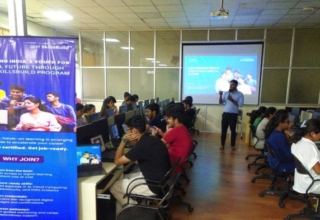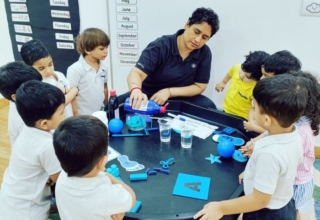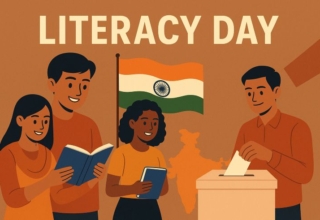
By Dr. R L Raina, Vice Chancellor, JK Lakshmipat University (Jaipur)

Within a matter of a few months, the coronavirus pandemic has changed the education landscape across the world. These modifications, which we never thought would be implemented so soon, until such a huge global health crisis, presented a roadmap on how education could change for the better – and the worse – in the long term.
As the coronavirus spread like wildfire across Asia, Europe, Middle East and the United States, several countries quickly decided to arrest the increase of a full-blown pandemic through announcement of immediate lockdown and since then there have been multiple announcements regarding the education landscape. As of March 13, the OECD estimated that over 421 million children are affected due to school closures announced or implemented in 39 countries.
These risk-control decisions have paved the way for alternative innovative modes of education be it home-schooling or online classes, especially in most heavily-affected countries. All these innovations during these unprecedented times of crisis made a lasting impact on the trajectory of learning innovation and digitization. As relaxations have now been imposed by many governments, we have to see how these models of education will help as the educational institutions are going to resume their classroom education once again soon.
Here are the takeaways for the Indian education sector:
Education leads through surprising innovations
People have been lamenting about traditional education being slow-paced as we have been following the centuries-old lecture-based approaches in outdated classrooms. But COVID-19 became the catalyst for change in our educational institutes as now we have become open to online education in a short span of time.
To help cease the virus’ spread, students started home learning in early March until the educational institutes took the decision of phone learning, followed by online learning through video conferencing. Now, students began leveraging online learning right from serious learning to other subjects like physical education and music. Students have been shooting their videos and sending to their teachers as “homework”. With high-speed technology becoming more prevalent, we have been witnessing learners and solution providers truly embracing the ‘learning anywhere, anytime’ concept of digital education in a range of formats. Now, as the education institutes are going to resume their in-person classroom soon, learning will be more fun as it complemented with new learning modalities – from live broadcasts to ‘educational influencers’ to virtual reality experiences.
Prevalence of Public-private educational partnerships
In just a couple of months, we have witnessed learning consortiums and coalitions taking shape, with diverse stakeholders – including governments, publishers, education professionals, technology providers, and telecom network operators – coming together to utilize digital platforms as a temporary solution to the crisis. In emerging countries where education has predominantly been provided by the government, this could become a prevalent and consequential trend to future education.
In many educational institutes, they are planning to develop a new cloud-based, online learning and broadcasting platform as well as to upgrade a suite of education infrastructure. Through examples like these, it is quite clear that our educational innovation is receiving attention beyond the typical government-funded or non-profit-backed social project. In the past decade, we have already seen far greater interest, and investment, coming from the private sector in education solutions and innovation. From Microsoft and Google in the U.S. to Samsung in Korea to Tencent, Ping An, and Alibaba in China, corporations are awakening to the strategic imperative of an educated populace.
While most of these initiatives to date have been limited in scope, and relatively isolated, the pandemic has actually paved the way for much larger-scale, cross-industry coalitions to be formed around a common educational goal.
The digital divide will be narrowed down
As schools in affected areas have been finding innovative solutions to continue teaching, the quality of teaching largely depends on the quality of digital access. Not only video conferencing through Zoom call helped the students and teachers, students also learnt through whatsapp messaging and email, especially in the rural areas.
This stressful and unprecedented time of COVID-19 has taught students the importance of building resilience to face such uncalled for threats and came out victorious. It also made them learn the need of quick decision-making, creative problem solving and adaptability in an unpredictable world.










